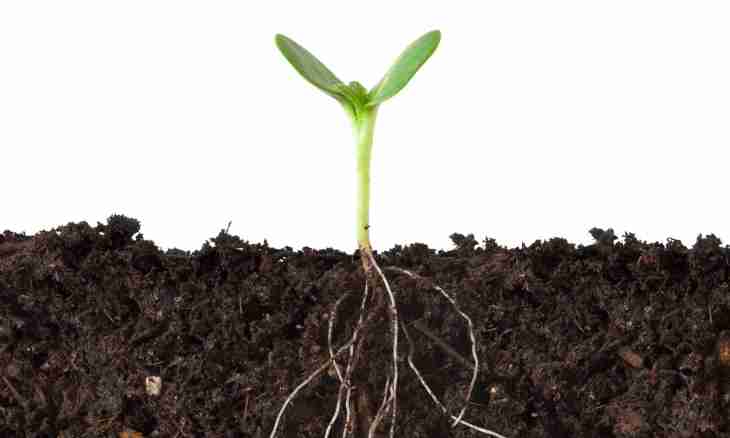The root performs the following functions: strengthening and deduction of a plant in the soil, absorption and carrying out water and mineral substances. In some plants the root is body of vegetative reproduction. Modified roots: reserve nutrients, interact with mushrooms and microorganisms and also carry out synthesis of biologically active agents.
Instruction
1. The main function of a root - strengthening of a plant in substrate. The plant at the expense of a root gains a foothold in the soil, and at strong wind its land part keeps.
2. The following function of a root - vsasyvatelny. The root absorbs from the soil the mineral substances dissolved in it and water at the expense of which the plant eats. Absorption of substances and water happens at the expense of the root hairs located on a root.
3. Carrying out mineral substances and water to escape - the following function of a root. Represents an internal part of a root - the central (axial) cylinder. The axial cylinder consists of the carrying-out system which represents the xylem and a floema surrounded with a ring from pericycle cages.
4. Some plants in a root have a reserve of nutrients. As a result of accumulation of nutrients, the main root is thickened and called - a root crop. Root crops consist of the reserving main fabric (carrots, turnip, parsley, beet). If there is a thickening of side or additional roots, then they are called - root tubers or root cones. Are formed by Korneklubni at a dahlia, potatoes, sweet potato.
5. Roots can interact with mushrooms or with microorganisms. Such mutually advantageous interaction is called - symbiosis. Cohabitation of roots of plants to hyphas of mushrooms is called - a mikoriza. The plant receives from a mushroom water with the nutrients dissolved in it, and the mushroom receives from a plant - organic matter. Family plants Bean have an interaction of root klubenk to nitrogen-fixing bacteria. Bacteria transfer the nitrogen which is contained in air to the mineral form available to plants. And plants provide to bacteria a habitat and additional food.
6. In roots there is also a synthesis of biologically active agents - hormones of growth, alkaloids. Then these substances can move to other bodies of a plant or remain in the root.
7. The root performs function - vegetative reproduction at such plants as: aspen, plum, cherry, lilac, vyyun, bergenia, sow-thistle. At these plants from root additional kidneys elevated escapes - root offsprings develop.
8. Modified roots perform the corresponding functions: sokratitelny, respiratory, air. The Sokratitelny (involving) roots are capable to be reduced in the longitudinal direction, involving the lower part of a stalk with kidneys. The tulip, a narcissus, a gladiolus have such roots, etc. At tropical plants the additional, air roots catch atmospheric water. At marsh plants is - respiratory roots. Respiratory roots are shoots of side roots through which air from the atmosphere is absorbed.
9. There are such roots as: roots suckers and roots props. Roots suckers are available for plants parasites. These roots take root into other plant and unite with it. On trunks of mangrove trees is - stilted roots, they protect a plant from surf waves.
